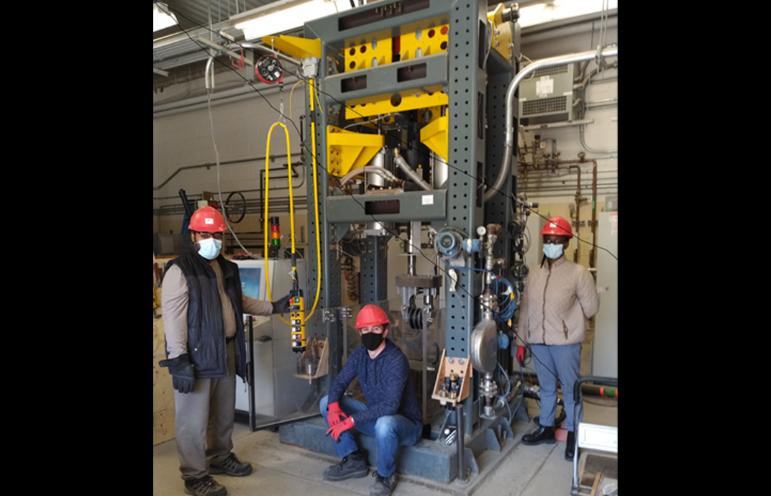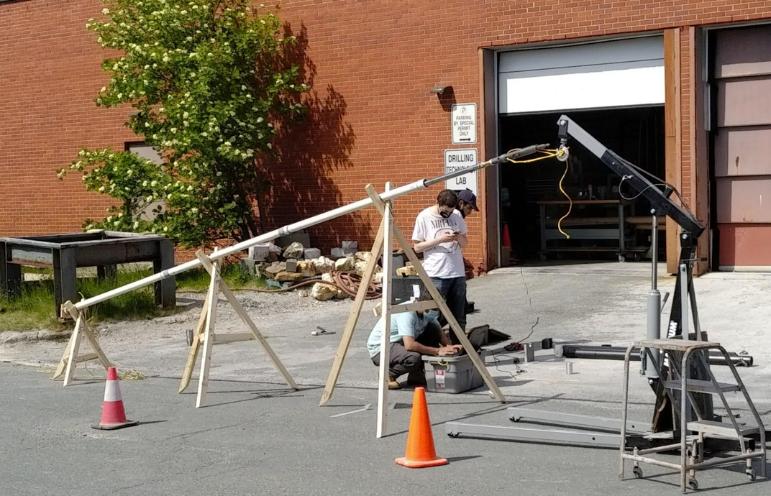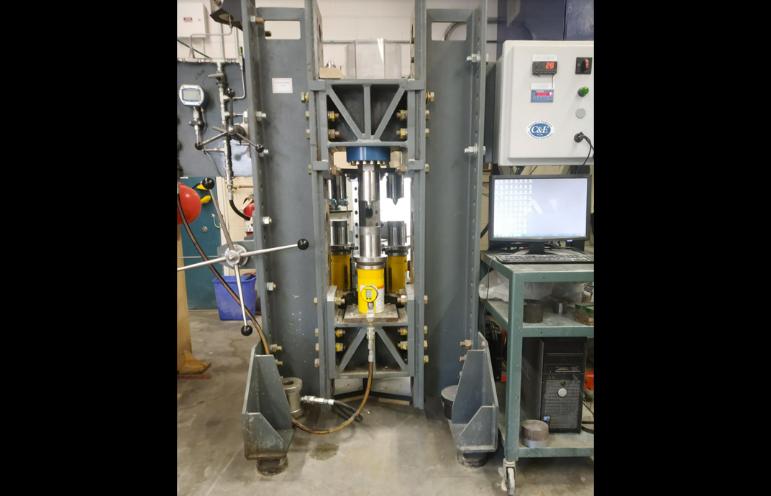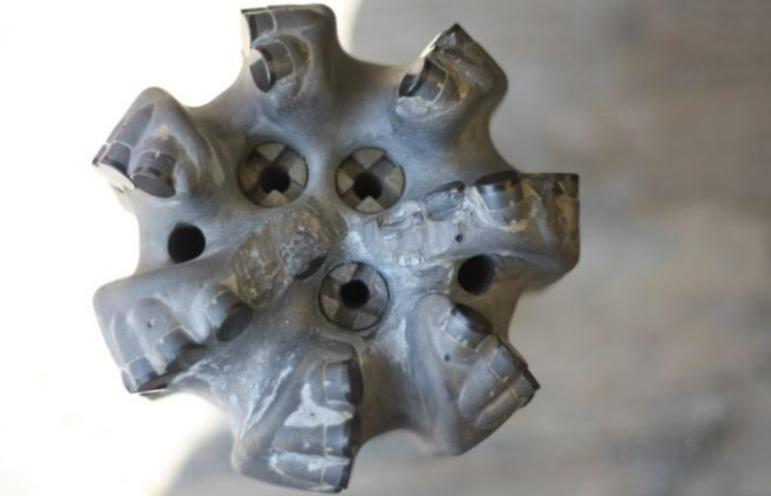Drilling Technology Laboratory (DTL)
About | People | Equipment | Location
About
The Drilling Technology Laboratory (DTL) is engaged in interdisciplinary research to investigate and develop sustainable technologies and processes for drilling and related activities, targeting oil and gas, mining, construction, and environmental industries. In some instances, the research and development are done in collaboration with industry organizations or companies. Representative research activities include:
- Development of innovative and sustainable mining methods based on drilling technology
- Investigation of subsurface imaging technologies for rock stability/quality assessment, mineral exploration, near-surface cavity detection, reservoir characterization, drill planning.
- Investigation of fundamental rock penetration mechanisms, including drilling dynamics and cutter/bit wear mechanisms for drilling optimization (see attached photo).
- Investigation of drilling control algorithms and real-time sensor data for drilling optimization, vibration mitigation and early kick detection.
- Development and commercialization of drilling tools, fluids and related advanced drilling technology. Some technologies have been patented or have active patent disclosures under review.
- Simulation of cuttings transport and multi-phase flow for cuttings transport for high inclination drilling.
- Experimental mechanics and Non-Destructive Evaluation (NDE) technology development for concrete materials for applications in structural health monitoring.
For more details about research activities at DTL, click here.
People
Principal Investigator
- Dr. Stephen Butt
- Technology development, optimization and commercialization
- Drilling penetration mechanisms, drill string dynamics and well control
- Near well bore geomechanics and stability
- Salt rheology and experimental characterization
- Mining ground control and subsidence
Other Investigators
- Dr. Syed Imtiaz
- Process Monitoring
- Process Control
- Modelling and Simulation
- Dr. Amer Aborig
- Reservoir and production engineering
- Well log and formation evaluation
- Pressure well test and analysis
- Horizontal well technology
- Dr. Geoff Rideout
- System dynamics
- Modelling and simulation
- Vehicle dynamics
- Modal testing
- Vibrations
- Dr. Jianming (James) Yang
- Random vibration/dynamics of mechanical systems and fatigue prediction under random loading
- Dr. Faisal Khan
- Green Engineering
- Mineral Processing
- Offshore and marine safety
- Safety and Risk
Equipment
The main infrastructure in the DTL consists of:
- Large Drilling Simulator (LDS) which simulates drilling under near-field conditions of weight and torque on bit (WOB, TOB), rotary speeds, bottomhole pressure, drill string compliance and bit dynamics.
- Small Drilling Simulator (SDS) which is a reduced scale version of the LDS for laboratory scale drilling investigation and teaching experiments.
- Geomechanics Loading Frame which is used with other equipment to characterize rock materials for strength (compressive and tensile), creep behaviour (e.g. for evaporate formations), hardness, abrasivity, indentation tests, elastic wave properties, electro-magnetic and radar properties.
- Subsurface imaging equipment e.g. borehole ground penetrating radar.
- Simulation software for rock material and rock mass formation behaviour under small scale processes (such as cutter penetration using Particle Flow Codes) and larger scale borehole and hanging wall stability.
Location
EN 1036G
Faculty of Engineering and Applied Science
Memorial University of Newfoundland
St. John's, NL



